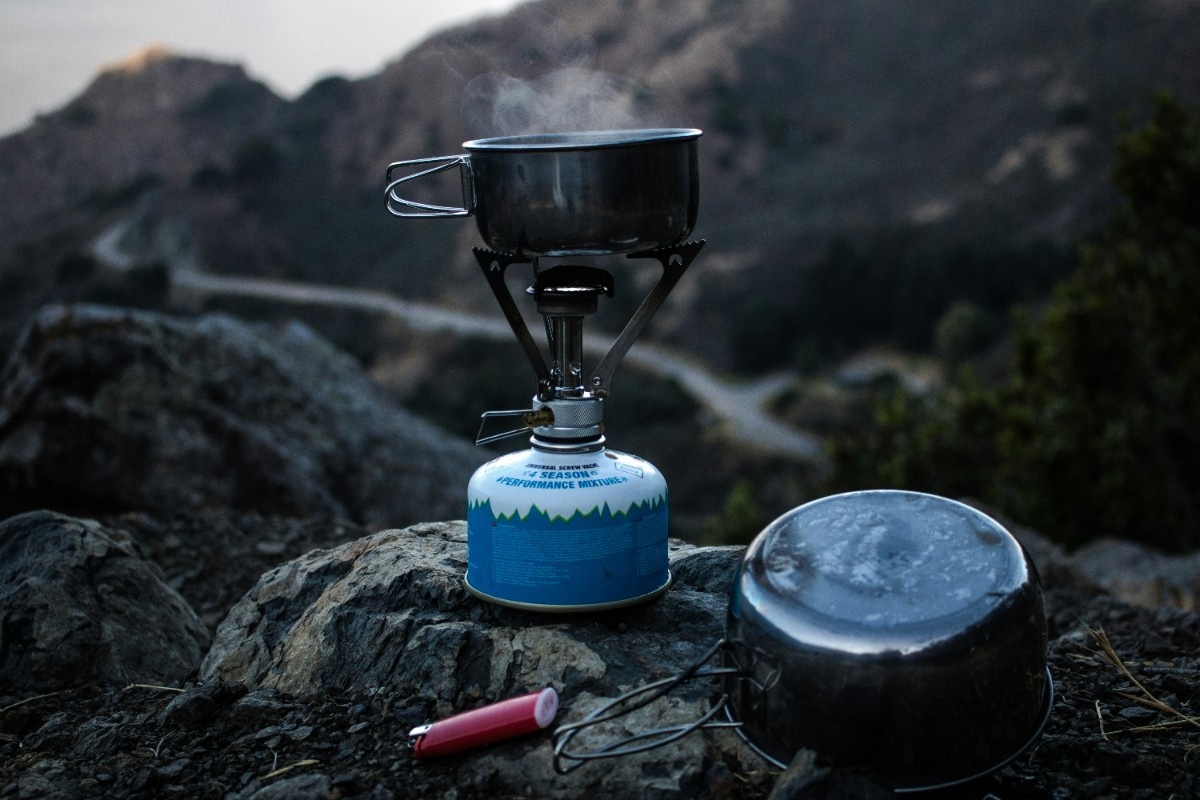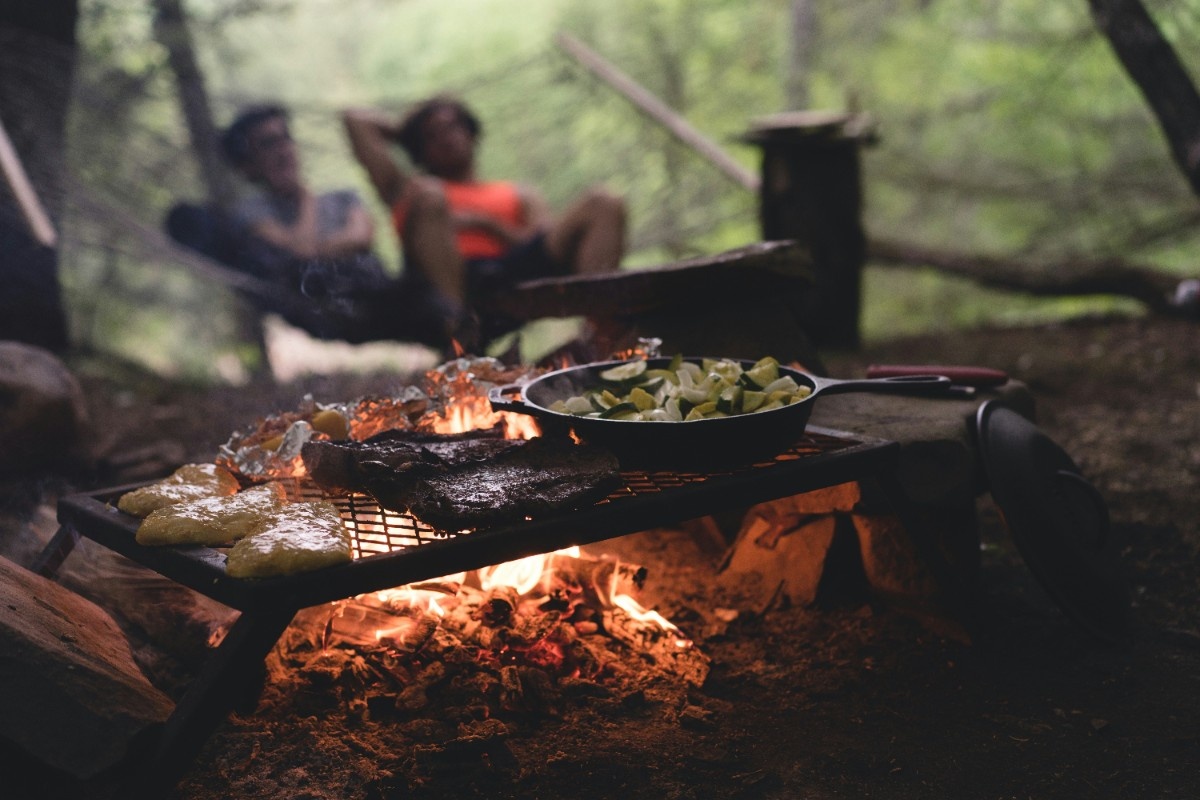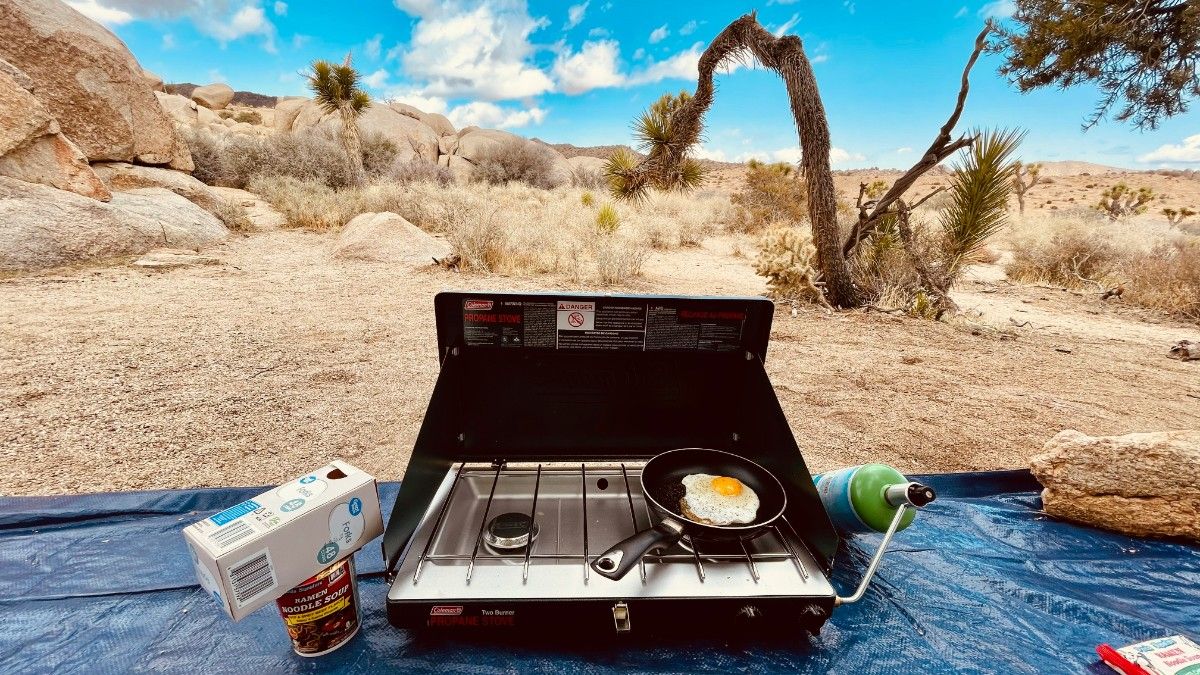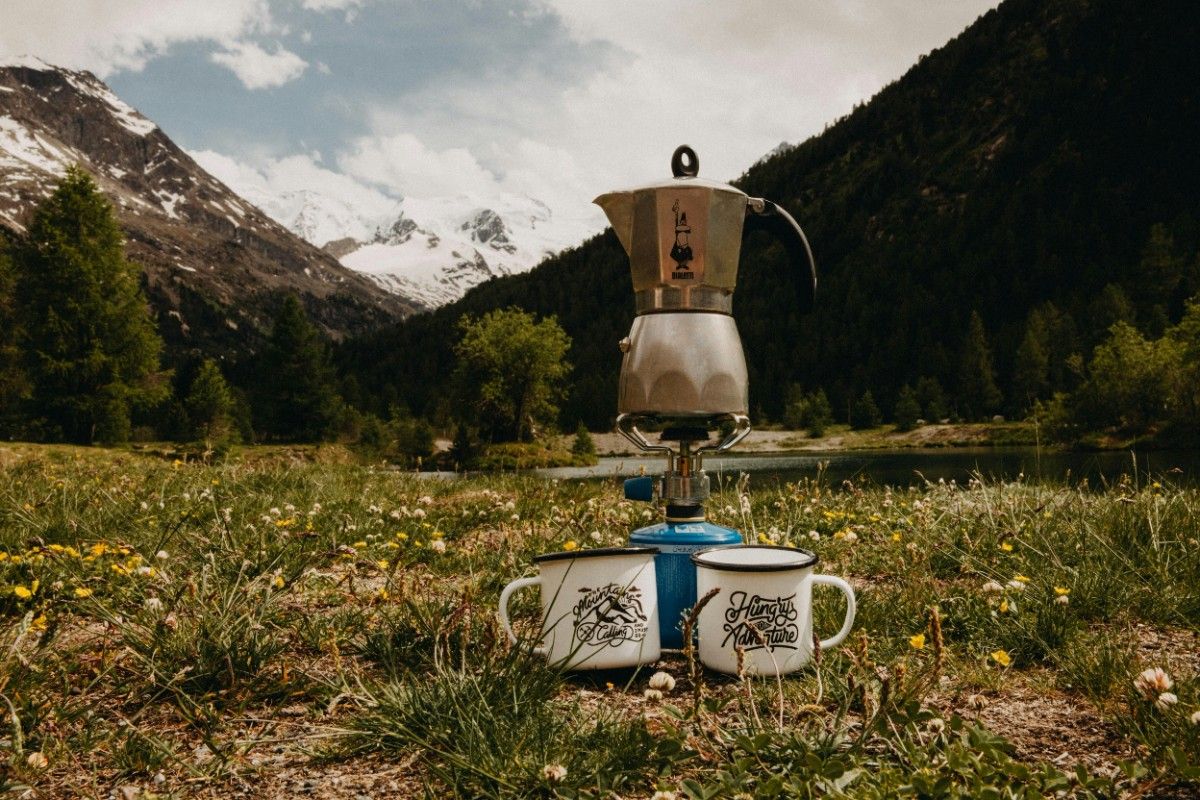Introduction to Camping Stoves
History and Evolution of Camping Stoves
The history of camping stoves dates back to the early 20th century when outdoor enthusiasts began seeking more convenient alternatives to traditional campfires. As camping gained popularity, the demand for portable, efficient cooking solutions grew. The first commercial camping stoves were simple devices, often using liquid fuels like kerosene or petrol. These early models were bulky and sometimes unreliable, but they marked the beginning of a revolution in outdoor cooking.
Throughout the mid-20th century, camping stove technology advanced rapidly. The introduction of pressurised fuel systems improved performance and reliability. The development of lightweight materials allowed for more compact and portable designs. By the 1970s, the portable camping stove had become a staple piece of equipment for outdoor enthusiasts.
The late 20th and early 21st centuries saw further innovations in camping stove design. The introduction of canister fuels, such as propane and butane, made gas camping stoves increasingly popular due to their convenience and clean-burning properties. Manufacturers began focusing on improving fuel efficiency, heat output, and overall performance. Today's camping stoves incorporate advanced materials and technologies to enhance the outdoor cooking experience, catering to a wide range of camping styles and preferences.
Benefits of Using Camping Stoves
One of the primary advantages of using a camping stove is its ability to provide a reliable heat source for cooking in various weather conditions. Unlike open fires, which can be challenging to start and maintain in wet or windy environments, camping stoves offer consistent heat output and are less affected by external factors. This reliability ensures that campers can enjoy hot meals and drinks, even in less-than-ideal circumstances.
Another significant benefit of camping stoves is their portability. Modern designs are often compact and lightweight, making them easy to transport in a rucksack or vehicle. This portability allows outdoor enthusiasts to bring the comforts of home cooking to remote locations, enhancing the overall camping experience. Whether you're using a small portable camping stove for a solo backpacking trip or a larger double camping stove for a family outing, these devices offer a convenient way to prepare meals in the great outdoors.
Camping stoves also provide greater control over cooking temperatures compared to campfires. Many models, especially gas camping stoves, offer adjustable flame control, allowing for precise heat management. This feature is particularly useful for preparing more complex meals or when simmering is required. Additionally, camping stoves are generally safer than open fires, with a lower risk of sparks or spreading flames.
Types of Camping Stoves
Gas Camping Stoves
Gas camping stoves are among the most popular options for outdoor cooking due to their convenience and ease of use. These stoves typically use propane or butane as fuel, stored in pressurised canisters. The popularity of gas camping stoves can be attributed to their quick ignition, precise flame control, and clean-burning properties.
One of the primary advantages of gas camping stoves is their ease of use. Most models feature push-button ignition systems, allowing for quick and easy lighting without the need for matches or lighters. The flame intensity can be easily adjusted, providing greater control over cooking temperatures compared to other stove types. This makes gas camping stoves suitable for a wide range of cooking tasks, from boiling water to simmering delicate sauces.
Gas camping stoves come in various sizes and configurations. Single-burner models are ideal for solo campers or those prioritising portability, while double camping stoves offer increased cooking capacity for larger groups or more complex meals. Some high-end models even feature three or more burners, resembling portable outdoor kitchens.
When considering a gas camping stove, it's important to factor in the availability and cost of fuel canisters. While camping stove gas canisters are widely available in many camping and outdoor stores, they can be more expensive than other fuel types in the long run. Additionally, empty canisters need to be disposed of properly, which can be a consideration for environmentally conscious campers.
Liquid Fuel Stoves
Liquid fuel stoves, also known as white gas stoves or multi-fuel stoves, offer a versatile and reliable option for campers, especially those venturing into remote areas or extreme conditions. These stoves typically use white gas (naphtha) as their primary fuel but can often accommodate other liquid fuels such as kerosene or even petrol in some cases.
One of the main advantages of liquid fuel stoves is their excellent cold-weather performance. Unlike gas canisters, liquid fuel doesn't suffer from pressure loss in low temperatures, ensuring consistent output even in frigid conditions. This makes liquid fuel stoves a popular choice for winter camping and high-altitude expeditions.
Another benefit of liquid fuel stoves is the ability to see and control the amount of fuel remaining. With transparent fuel bottles, campers can easily monitor their fuel supply and plan accordingly. This is particularly useful for extended trips where resupply options may be limited.
Liquid fuel stoves typically require priming before use, which involves heating the fuel line to vaporise the fuel. While this process adds an extra step to the cooking routine, it allows for better fuel efficiency and performance once the stove is running. Many experienced campers appreciate the ritual and control that comes with operating a liquid fuel stove.
Wood-Burning Camping Stoves
For those seeking a more traditional and self-sufficient approach to outdoor cooking, camping wood stoves offer an appealing alternative. These stoves use readily available biomass fuel sources such as twigs, pine cones, and small branches, eliminating the need to carry fuel and reducing environmental impact.
Camping wood stoves come in various designs, from simple folding models to more sophisticated units with built-in fans or thermoelectric generators. The basic principle remains the same: a combustion chamber where the wood is burned, with a cooking surface or pot support above.
One of the primary advantages of wood-burning stoves is the unlimited fuel supply in most camping environments. This makes them an excellent choice for extended trips or emergency preparedness scenarios. Many campers also enjoy the ritual of gathering fuel and tending to the fire, feeling a closer connection to nature in the process.
Wood-burning stoves are generally more environmentally friendly than gas or liquid fuel options, as they don't require disposable canisters or non-renewable fuel sources. Some models are designed to burn wood extremely efficiently, producing less smoke and leaving minimal ash behind.
However, camping wood stoves do have some limitations. They require more skill and patience to use effectively, as factors such as wood moisture content, wind conditions, and fire management skills can all affect the stove's performance. Cooking temperature control can be more challenging compared to gas or liquid fuel stoves, requiring practice to master.
Camping Stove Fuels and Efficiency
Gas Fuels
Gas is one of the most popular fuel choices for camping stoves due to its convenience and clean-burning properties. The two primary types of gas used in camping stoves are propane and butane, each with its own characteristics. Propane is widely used in camping stoves due to its excellent performance across a range of temperatures. It has a lower boiling point than butane, making it more suitable for cold-weather camping. Camping stove gas canisters containing propane are readily available in many camping and outdoor stores, and the fuel burns cleanly with good heat output.
Butane, on the other hand, is more compact and has a higher energy density than propane. This means that butane canisters can be smaller and lighter for the same amount of cooking time. However, butane doesn't perform well in cold temperatures, as it struggles to vaporise below about 0°C. For this reason, butane is often used in mixed fuel canisters alongside propane to combine the benefits of both gases.
Many modern camping stoves are designed to use standardised threaded gas canisters, which are widely available and easy to connect. These canisters come in various sizes, from small 100g canisters suitable for weekend trips to larger 450g or even 900g canisters for extended camping adventures. The convenience of these camping stove gas canisters is a significant factor in their popularity among campers.
One of the main advantages of gas fuels is their ease of use. Most gas camping stoves feature push-button ignition systems and offer instant heat with precise flame control. The clean-burning nature of gas also means less soot and residue on your cookware. However, gas canisters can be more expensive than other fuel options in the long run, and the empty canisters need to be disposed of properly. Some campers also find it challenging to gauge the remaining fuel in a canister, which can lead to unexpected fuel shortages during trips.
Liquid Fuels
Precise heat control is crucial for versatile outdoor cooking. Modern camping stoves offer a range of features to enhance heat control. High-quality stoves offer fine-tuned control at low heat settings, allowing for simmering and slow cooking. This is particularly important for preparing more complex meals or dishes that require gentle, prolonged cooking.
Some advanced gas camping stoves feature dual-ring burners with concentric burner rings that can be controlled independently. This design offers a wider range of heat outputs, from a gentle simmer to a full boil. Pressure regulators, in addition to improving wind performance, help maintain consistent heat output as fuel canisters deplete. This is particularly beneficial for longer cooking sessions.
High-quality control valves allow for precise flame adjustment from a full boil to a gentle simmer. This level of control is especially valuable when using a camping stove for more than just boiling water. Good heat control not only improves cooking versatility but can also contribute to fuel efficiency by allowing you to use only the heat necessary for each task.
For those who enjoy more elaborate camp cooking, the ability to simmer is essential. Whether you're reducing a sauce, preparing a delicate fish dish, or slow-cooking a stew, good simmer control can significantly expand your camp cooking repertoire. When choosing a camping stove, consider your cooking style and the types of meals you typically prepare in the outdoors.
Choosing the Best Camping Stove for Your Needs
Factors to Consider
Selecting the best camping stove for your outdoor adventures requires careful consideration of various factors. Your camping style significantly influences the type of stove that will suit you best. For backpackers carrying all their gear, weight and compactness are crucial. In this case, ultralight canister stoves or even a portable camping stove might be the best option. These stoves are designed to be incredibly lightweight and pack down to very small sizes, making them ideal for long-distance hikers or those who prioritise minimalism in their gear.
For car camping, where weight is less of a concern, you can opt for larger, more feature-rich stoves. A double camping stove might be appropriate, allowing you to cook multiple dishes simultaneously. These stoves often offer better cooking versatility and higher heat output, making them suitable for preparing more elaborate meals. If you're setting up a base camp for an extended stay, you might even consider a full camping kitchen setup with multiple burners and accessories.
The size of your camping group is another crucial factor. Solo campers might find a simple single-burner stove sufficient, while couples or small groups might prefer a compact double-burner stove or two single-burner stoves. For large groups, a large double-burner stove or multiple stoves for simultaneous cooking could be necessary.
Your cooking style and the types of meals you plan to prepare should also influence your choice. If you mostly boil water for dehydrated meals or make simple one-pot dishes, a basic single-burner stove will suffice. However, if you enjoy preparing more elaborate camp cuisine, look for stoves with good simmer control and potentially multiple burners. Some campers even enjoy specialised cooking methods like grilling or baking in the outdoors, which might require specific stove features or accessories.
The environment and climate you typically camp in will affect your stove choice. Most canister stoves perform well in spring, summer, and autumn conditions. However, for winter camping, you might need to consider liquid fuel stoves or specialised winter canister stoves that perform better in cold temperatures. If you frequently camp at high altitudes, look for stoves designed to maintain performance in these conditions.
Fuel availability in your typical camping areas is another important consideration. Gas camping stoves are popular because gas canisters are usually easy to find in developed camping areas. However, for remote areas, liquid fuel stoves offer more flexibility, as white gas, kerosene, or petrol are often available even in remote locations. If you plan to travel internationally, a multi-fuel stove might provide the most options when fuel availability is uncertain.
Lastly, consider your budget. Camping stoves are available at various price points, from budget-friendly options to high-end models with advanced features. While it's tempting to go for the cheapest option, remember that a good quality stove can last for many years and significantly enhance your camping experience. Balancing your budget with your needs and the frequency of your camping trips will help you make the best choice.
Recommendations for Different Scenarios
For ultralight backpacking, where every gram counts, consider stoves like the MSR PocketRocket or the BRS-3000T. These portable camping stoves typically weigh under 100 grams and pack down to very small sizes. They're ideal for solo hikers or couples who primarily need to boil water for dehydrated meals or simple cooking. These stoves usually use gas canisters, which are widely available and easy to use.
For general three-season backpacking, a reliable canister stove like the Jetboil Flash or MSR WindBurner offers a good balance of weight, efficiency, and ease of use. These integrated stove systems combine the burner and pot into one unit, providing excellent fuel efficiency and wind resistance. They're particularly good for boiling water quickly, which is often the primary cooking task on backpacking trips.
Winter camping and mountaineering require stoves that can perform in extreme conditions. For these scenarios, consider a liquid fuel stove like the MSR WhisperLite International or the Primus OmniFuel. These stoves perform well in sub-zero temperatures and at high altitudes. They're also versatile, often capable of burning multiple fuel types, which can be crucial in remote areas or on international trips.
Car camping with families or groups often calls for a larger, more powerful stove. A double camping stove like the Coleman Classic or Camp Chef Explorer offers ample cooking space and output for group meals. These stoves allow you to cook multiple dishes simultaneously and often provide good simmer control for more complex cooking. They typically use propane as fuel, which is readily available and affordable for extended trips.
For lightweight group camping, where you need to balance weight and cooking capacity, consider a system like the Jetboil Genesis Basecamp System. This compact two-burner stove offers good cooking versatility while remaining relatively portable. It's an excellent choice for small groups who want the ability to prepare more varied meals without carrying a large, heavy stove.
Budget-conscious campers have several good options. Simple canister stoves like the BRS-3000T or basic liquid fuel stoves like the Coleman Guide Series Compact Dual Fuel offer good performance at lower price points. For ultra-budget options, DIY alcohol stoves can be very inexpensive yet effective, though they do have limitations in terms of heat output and wind resistance.
Advanced Topics in Camping Stove Use
High-Altitude Cooking
Cooking at high altitudes presents unique challenges due to lower atmospheric pressure. As you ascend to higher elevations, the boiling point of water decreases. At sea level, water boils at 100°C, but at 3,000 meters (about 10,000 feet), it boils at approximately 90°C. This decrease in boiling temperature can significantly affect cooking times and food preparation.
When using a camping stove at high altitudes, you'll need to adjust your cooking techniques. Water and other liquids will evaporate more quickly, so you'll need to use more liquid in your recipes and keep a close eye on pots to prevent them from boiling dry. Cooking times for foods like rice, pasta, and dried beans will increase, sometimes dramatically. For example, pasta that normally cooks in 10 minutes at sea level might take 15-20 minutes at high altitude.
The lower air pressure at high altitudes can also affect stove performance. Gas camping stoves may produce a larger, less focused flame due to the lower air pressure. This can reduce heating efficiency and increase fuel consumption. Some high-altitude campers prefer liquid fuel stoves, as they tend to perform more consistently at elevation. If using a canister stove, look for models with pressure regulators, which can help maintain consistent performance at various altitudes.
Baking at high altitudes is particularly challenging. If you enjoy camp baking, you'll need to adjust your recipes. Typically, this involves reducing leavening agents, increasing liquid, and adjusting cooking temperatures and times. Some camp bakers find that using a Dutch oven or a specially designed camping oven can help mitigate some of the challenges of high-altitude baking.
Remember that fuel efficiency decreases at high altitudes, so you'll need to carry more fuel than you would for a similar trip at lower elevations. Always pack extra fuel when heading to high-altitude destinations, and consider using a stove system with an integrated heat exchanger for maximum efficiency.
Winter Camping and Cold-Weather Cooking
Winter camping and cold-weather conditions present their own set of challenges for outdoor cooking. The most significant issue is the effect of cold temperatures on fuel, particularly for gas camping stoves. As the temperature drops, the pressure inside gas canisters decreases, reducing fuel flow and stove performance. In very cold conditions, gas stoves may fail to function altogether.
To combat this issue, many winter campers opt for liquid fuel stoves, which perform reliably in cold temperatures. If you prefer to use a canister stove, look for models that allow the canister to be inverted. This "liquid feed" method can improve cold-weather performance. Some manufacturers also produce special winter gas mixes or insulated canister cozies to help maintain pressure in cold conditions.
Another consideration for winter camping is the need to melt snow for water. This process can consume a significant amount of fuel, so efficient stoves are crucial. When melting snow, always start with a small amount of liquid water in the pot to prevent scorching, which can impart an unpleasant taste to the water.
Wind has a more significant impact on stove performance in cold weather, so good wind protection is essential. Use a windscreen whenever possible, and try to cook in a sheltered location. Some winter campers create snow walls or dig snow kitchens to provide additional shelter for their stoves.
In snow, it's important to create a stable platform for your stove. A small piece of plywood or a specially designed stove base can prevent your stove from sinking into the snow as it melts underneath. This platform also helps insulate the stove from the cold ground, improving efficiency.
Safety is paramount when winter camping. Always cook in well-ventilated areas and never inside a tent due to the risk of carbon monoxide poisoning. Be extra cautious when handling fuel, as spills on skin can lead to rapid frostbite in cold conditions. Lastly, consider carrying multiple stoves or a backup stove for winter trips, as stove failure in cold conditions can quickly become a serious situation.
Emerging Trends and Future Technologies
The world of camping stoves continues to evolve with new technologies and design innovations. One emerging trend is the integration of power generation into stove systems. Some stoves now incorporate thermoelectric generators that can produce small amounts of electricity while cooking, allowing you to charge devices like smartphones or GPS units. This technology is particularly appealing for extended backcountry trips where access to power is limited.
Another developing trend is the advent of "smart" camping stoves. These stoves can connect to smartphone apps via Bluetooth, allowing users to monitor fuel levels, control cooking temperature, and even access recipes. While these features may seem superfluous to traditional campers, they can add convenience and precision to camp cooking.
Advancements in materials science are leading to the creation of increasingly lightweight and durable stoves. New alloys and composite materials allow for stove components that are stronger and lighter than ever before. This is particularly beneficial for backpackers and other weight-conscious outdoor enthusiasts.
There's also growing interest in more environmentally friendly fuel options. Some manufacturers are exploring bio-based liquid fuels as a more sustainable alternative to traditional petroleum-based fuels. These fuels promise to reduce the carbon footprint of outdoor cooking while still providing reliable performance.
Hybrid stove designs are another area of innovation. Some manufacturers are developing stoves that can use multiple fuel types without requiring separate jets or extensive reconfiguration. This versatility can be particularly useful for international travellers or those who frequently camp in areas with uncertain fuel availability.
Ongoing research into burner design and heat transfer is leading to increasingly fuel-efficient stoves. Some new designs promise significant improvements in fuel efficiency, which not only reduces the amount of fuel campers need to carry but also minimises environmental impact.
As outdoor recreation continues to grow in popularity, we can expect to see further innovations in camping stove technology. These advancements will likely focus on improving efficiency, reducing environmental impact, and enhancing the overall cooking experience in the outdoors.
Related Articles
Liquid fuels offer a versatile and efficient option for camping stoves, particularly for those venturing into remote areas or extreme conditions. The most common liquid fuels used in camping stoves include white gas (naphtha), kerosene, and unleaded petrol. White gas, also known as Coleman fuel or camp fuel, is a highly refined petroleum product that burns cleanly and efficiently. It's the fuel of choice for many serious backpackers and mountaineers due to its excellent cold-weather performance and high heat output. White gas is also relatively safe to transport and store.
Kerosene is another popular liquid fuel option, particularly in developing countries where it's often more readily available than white gas. Kerosene burns hot and is very energy-dense, meaning a little goes a long way. However, it can be smoky and has a strong odour, which some campers find unpleasant. Unleaded petrol can be used in many multi-fuel stoves, offering a widely available fuel option in a pinch. However, it's generally not recommended as a primary fuel due to its volatility and the additives it contains, which can clog stove components over time.
Liquid fuel stoves typically use refillable fuel bottles, allowing campers to carry exactly the amount of fuel they need for a trip. This can be more cost-effective and environmentally friendly than disposable gas canisters in the long run. One of the main advantages of liquid fuels is their excellent performance in cold weather and high altitudes. Unlike gas canisters, which can lose pressure in low temperatures, liquid fuels maintain their performance regardless of external conditions. This makes liquid fuel stoves a popular choice for winter camping and high-altitude expeditions.
Fuel Efficiency and Heat Output
Fuel efficiency is a crucial consideration when choosing a camping stove. It refers to how effectively a stove converts fuel into usable heat for cooking. More efficient stoves will use less fuel to accomplish the same cooking tasks, allowing you to carry less fuel weight and reduce costs. Several factors affect a stove's fuel efficiency, including its design, wind resistance, altitude, and your cooking style.
Stove design plays a significant role in fuel efficiency. Some stove designs are inherently more efficient than others. For example, integrated stove systems that combine the burner and pot into one unit often achieve higher efficiency by minimising heat loss. Wind resistance is another crucial factor, as wind can significantly reduce a stove's efficiency by blowing away heat. Stoves with good windscreens or built-in wind resistance tend to be more fuel-efficient in real-world conditions.
Altitude also affects fuel efficiency, as the lower air pressure at higher altitudes can impact combustion efficiency. Some stoves are designed to maintain performance at high altitudes. Your cooking style can also impact fuel efficiency. Using a lid on your pot, for example, can significantly reduce cooking times and fuel consumption.
Heat output, measured in British Thermal Units (BTUs) or watts, is another important consideration. Higher heat output allows for faster boiling times and better performance in cold conditions. However, it's important to balance heat output with fuel efficiency and control. Some high-output stoves may consume fuel rapidly and provide less simmer control for delicate cooking tasks.
When selecting a camping stove, consider your typical cooking needs and camping conditions. A highly efficient stove with moderate heat output may be ideal for most three-season camping, while a high-output stove might be necessary for winter camping or large group cooking. By understanding the properties and efficiencies of different fuel types and stove designs, you can make an informed decision that balances performance, convenience, and environmental impact.
Key Features and Technologies in Modern Camping Stoves
Ignition Systems
One of the most significant advancements in camping stove technology has been the development of reliable ignition systems. While traditional stoves required matches or a separate lighter, many modern stoves now offer integrated ignition mechanisms. The most common type of built-in ignition system is the piezo ignition. This system uses a spring-loaded hammer to strike a crystal, creating a spark that ignites the fuel. Piezo igniters are reliable and don't require batteries, but they can wear out over time.
Some high-end camping stoves feature electronic ignition systems powered by small batteries. These tend to be more reliable than piezo igniters, especially in cold or damp conditions. However, they do require battery maintenance and replacement. Many stoves still offer the option for manual ignition with a match or lighter, either as a primary method or as a backup to an integrated system.
The convenience of integrated ignition systems cannot be overstated. They allow for quick and easy lighting of the stove, even in challenging weather conditions. This is particularly beneficial for gas camping stoves, where the fuel can be ignited instantly. For safety and redundancy, it's always wise to carry a backup ignition source such as waterproof matches or a fire starter, even when using a stove with an integrated ignition system.
Wind Resistance and Windscreens
Wind can significantly impact a stove's performance, blowing away heat and potentially extinguishing the flame. Modern camping stoves incorporate various features to enhance wind resistance. Some stoves, particularly those designed for backpacking, feature built-in windscreens that wrap around the burner and pot. These integrated windscreens are typically more compact and less likely to be forgotten or lost compared to separate windscreens.
Many stoves feature recessed burners, placing the flame in a protected well. This design not only shields the flame from wind but also improves heat transfer to the pot. Some advanced gas camping stoves incorporate pressure regulators, which help maintain consistent fuel pressure and flame performance in windy conditions.
For larger camping stoves, particularly double camping stoves, removable and adjustable windscreens are common. These can be positioned to block wind from any direction, providing flexible protection in various camp setups. When using a stove in windy conditions, proper placement and the use of natural windbreaks can further improve performance.
The importance of wind resistance cannot be overstated. A stove that performs well in calm conditions but struggles in the wind can be frustrating and inefficient to use. Good wind resistance not only improves cooking performance but also enhances fuel efficiency, allowing you to conserve fuel and reduce the amount you need to carry.
Heat Control and Simmer Capability

Let us know you agree to cookies
We use marketing, analytical and functional cookies as well as similar technologies to give you the best experience. Third parties, including social media platforms, often place tracking cookies on our site to show you personalised adverts outside of our website.
We store your cookie preferences for two years and you can edit your preferences via ‘manage cookies’ or through the cookie policy at the bottom of every page. For more information, please see our cookie policy.






